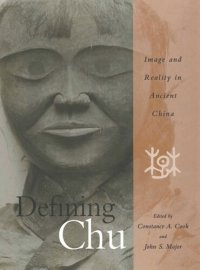
Ebook: Defining Chu: Image and Reality in Ancient China
- Year: 2004
- Publisher: University of Hawaii Press
- Language: English
- pdf
Scholars agree that the "southern" culture of China, roughly identifiable with the state of Chu during the period between 700 and 200 B.C.E., is of great importance in the subsequent development of Chinese culture. Early Han artists and writers from the first century B.C.E. were encouraged to preserve "exotic" and "barbaric" Chu images and songs as an antidote to the harsh laws of the Qin. This somewhat disparaging view of the Chu has persisted to modern times despite material remains that reveal a culture possessing a level of sophistication equal to (or surpassing) that of contemporary northern (Confucian) civilization. Splendid works of art, excavated in modern Hubei and Henan, along with literary, religious, and historical texts, attest to the complexity and distinctiveness of Chu culture; yet the nature of that distinctiveness and its significance in the history of China have never been adequately addressed. This book, the first in a Western language to attempt such a broad and in-depth analysis of a single Chinese state, traces the evolution of the Chu from a vassal state of Zhou in the Spring and Autumn period to its rise and fall as a great hegemonic kingdom in the Warring States period and its eventual resurgence in the early Han dynasty.
Defining Chu begins with an overview of the historical geography, an outline of archaeological evidence for Chu history, and an appreciation of Chu art. Following chapters examine issues of state and society: the ideology of the ruling class, legal procedures, popular culture, and daily life. The final section surveys Chu religion and literature and includes an analysis of the Chuci, the great anthology of Chu poetry, and its impact on mainstream Chinese literature.
A translation of the "Chu Silk Manuscript" is appended. This document has intrigued scholars since its discovery in Changsha some sixty years ago. The inclusion of this rare and difficult text, available for the first time in an effective and accessible translation, will make this volume indispensable to students and scholars of early Chinese history and thought.